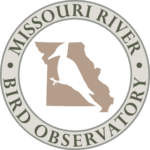Interior Highlands Migratory Owl Project
Donate to our Interior Highlands Migratory Owl Project today and help preserve these majestic owls for future generations.
Interior Highlands Migratory Owl Project Overview
This project seeks to fill critical knowledge gaps in the ecologies of two fascinating migratory owl species: the Northern Saw-whet Owl (NSWO) and the Long-eared Owl (LEOW). These elusive raptors are understudied, especially during the nonbreeding season, with severe gaps in understanding even basic information about their distributions. This is especially true in the Interior Highlands of the central U.S., a region that likely provides key wintering habitat for both species. By focusing on this understudied region, we aim to deepen our understanding of their distribution, behavior, migration patterns, and ecological needs.
Expanding Our Owl Research Efforts
To achieve these objectives, we are building on a decade of work by continuing fall migration research of Northern Saw-Whet Owls at our established 10-year banding site. Additionally, we are launching a new winter research program for Long Eared Owls in Arkansas and Missouri, in partnership with the Missouri River Bird Observatory. These efforts represent some of the first studies of these species overwintering within this region.
Our research is particularly important because both species are migratory and widespread, yet their behaviors, habitat requirements, and distributions during fall and winter remain poorly understood. These gaps in knowledge hinder conservation efforts and leave us with many unanswered questions about how these secretive nocturnal raptors survive outside their breeding grounds.
Migratory Owl Conservation Significance
Both the Northern Saw-Whet Owl and Long-Eared Owl are species of conservation concern across multiple U.S. states. The Northern Saw-Whet Owls is listed as a concern in 6 states, while the Long-Eared Owl is listed in 13 states. However, due to the lack of data in the Interior Highlands, their regional conservation statuses cannot currently be determined. Evidence suggests both species may range further south during the nonbreeding season than previously documented–including into the Interior Highlands–making it essential to study their winter habitats.
Understanding these owls is not just critical for their survival—it also contributes to our knowledge of larger ecological systems. As top predators, Northern Saw-Whet Owls and Long-Eared Owls play key roles in maintaining the balance of rodent populations and overall ecosystem health.
Bridging the Knowledge Gap
While population declines and shifting migration patterns have been observed in some diurnal raptors over the past 20 years, little is known about how these trends affect nocturnal raptors like owls. This is largely due to the challenges of studying secretive, nocturnal species, which require specialized techniques and long-term monitoring programs. Our project is designed to address these challenges and provide critical data on these nocturnal predators.
What This Research Means for the Future
By filling these knowledge gaps, our research will not only advance scientific understanding of Northern Saw-Whet Owls and Long-Eared Owls but also provide actionable insights for conservation efforts. Long-term studies like ours are vital for tracking population trends, migration changes, and habitat use over time. This work also ensures that policymakers and conservationists have the information they need to protect these species and their habitats effectively.
Through collaborations with organizations like the Missouri River Bird Observatory and the Project Owlnet Working Group, we are leveraging resources, expertise, and community support to maximize the impact of this research. Our efforts contribute to a growing body of knowledge that will inform habitat restoration, wildlife management, and broader conservation initiatives for raptors across North America.
Why This Matters
Owls are more than just enigmatic predators, they are vital to the health of ecosystems and serve as indicators of environmental health. However, the lack of data on species like NSWO and LEOW leaves many questions unanswered about their ecological roles and conservation needs. With your support, we can continue this critical research and ensure these magnificent birds have a thriving future.
Frequently Asked Questions
Why are the Northern Saw-whet Owl and Long-Eared Owl important?
As predators, these owls play a vital role in maintaining ecosystem balance through the regulation of small mammal populations. Both species are listed as conservation concern in multiple U.S. states and very little is known about their nonbreeding habits, making it essential to study them.
Why is the Interior Highlands region significant for owl research?
Only recently have Northern Saw-whet Owls been identified as winter residents in the Interior Highlands of the central U.S.; and the region likely provides important wintering habitat for Long-eared Owls too. However, both species are incredibly understudied–especially at the southern edge of their distributions–and understanding how these owls use this region during fall and winter is key to their long-term conservation.
How are owls tracked and monitored in this project?
Researchers use techniques like banding, acoustic monitoring, and deployment of nanotags (small transmitters that are part of the larger Motus initiative) to provide valuable data on the movements, behaviors, and habitat preferences of Northern Saw-whet and Long-eared Owls during winter.
How do climate change and habitat loss impact these owls?
Climate change and habitat loss can affect prey availability, disrupt migration patterns, and reduce suitable habitat throughout the year–during both the breeding and nonbreeding seasons. This project aims to understand how these factors influence owls and identify strategies to mitigate their impacts.
How does this project contribute to conservation efforts?
By collecting long-term data on Northern Saw-whet Owls and Long-Eared Owls, this project provides insights into their population trends, migratory behavior, and habitat use. This information is critical for developing effective conservation strategies and protecting their habitats.
Who are the project’s collaborators?
In our work with migratory owls, Ozark Bird Conservancy works closely with Project Owlnet Working Group, Ozark Natural Science Center, and Missouri River Bird Observatory. Collaborating with these organizations and other partners allows us to conduct research, share expertise, and expand the reach of conservation efforts for these species.
How can I support the Interior Highlands Migratory Owl Project?
You can support the project by donating to Ozark Bird Conservancy, volunteering for fieldwork, or participating in community science projects like owl monitoring programs. Click here to learn more about ways to get involved!
Donate To Ozark Bird Conservancy
We need your help. Support Ozark Bird Conservancy today! Donate now to fund this project and others like it.


